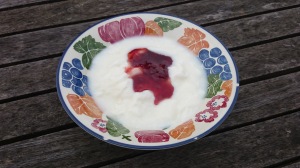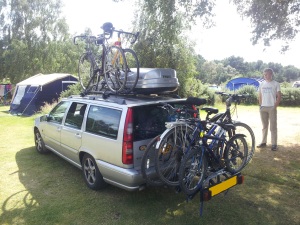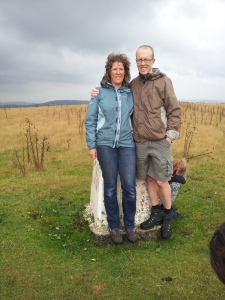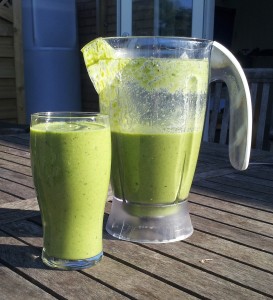I’ve just read this response (reproduced below in blue text) to an old paper in the BMJ entitled What Causes Chronic Fatigue Syndrome? . The response is written by Anthony D Collings, Consultant Physician and David Newton . The article originally stated where they worked (Essex CFS Service, Southend University Hospital), but Essex CFS service disassociated themselves from the article, so the article now states they are writing in a personal capacity.
How can these doctors continue to work with patients with ME/CFS if they believe what they have written in this article? If you really believe your patients are imagining themselves ill through their ideas and beliefs what are you doing working with them? And if they don’t believe what they have written, why are they writing it and publishing it on the site of a widely read medical journal?
According to Essex CFS service, in a letter to Dr Shepherd at the ME association, the purpose of the article was “to spark debate in the medical arena.” Lets imagine a trainee doctor reads this article and a few weeks or months later he meets a patient with ME/CFS. Lets imagine this doctor has had no specialist training in ME/CFS. The patient is referred to them because of symptoms, which may be completely unrelated to their ME/CFS. During their first consultation the patient mentions their ME/CFS and they find that the doctor is uninterested in it and brushes it aside. The patient doesn’t know why, but it’s because instead of being exposed to useful information about the illness this doctor is exposed to ideas that the disease is a Meme, so instead of being concerned that the patient’s mitochondria are not functioning properly, or that the patient has a poor tolerance to exercise, or that the patient may become brain fogged during the consultation and not fully take in what they are being told, the doctor does not think about the effect of ME/CFS when deciding treatment, or the effect of the treatment he proposes on the ME/CFS.
If this article had been published in an obscure location and not written by doctors who work with ME/CFS patients every day I would be a lot less concerned. As it is, this article seriously damages the credibility of everyone who has ME/CFS. I frequently hear stories of sufferers encountering medical practitioners who “don’t believe” in ME/CFS. This article encourages those views, instead of helping sufferers to persuade doctors and the public that just because there is not yet a diagnostic test for ME it doesn’t mean it’s not real. MS used to be called Hysterical Paralysis (paralysis caused by emotions).
Fortunately for MS sufferers brain scans can now show whether they have the illness, and hence doctors believe that their symptoms have a genuine physical cause. So, please read the article below, but replace CFS with MS and you will instantly see how ridiculous the article is. If you need more convincing, below the article I take it apart in more detail.
In his 1976 book ‘The Selfish Gene’ (1) Richard Dawkins coined the term ‘meme’. Dawkins used the term particularly in relation to religious beliefs and defined it as an idea or group of ideas which propagate between individuals and which share many of the characteristics of life, including the abilities of propagation and self defence, and the capacity to evolve.
The concept of culturally-driven disease-disorders is not new (2) and memes have been suggested as a means of cultural transmission in various disorders including, in a general sense, in CFS (3).
Meme-mediated syndromes, it may be argued, are common in the history of medicine, from railway brain which dogged early travellers on railways in the mid-1800s, manifesting itself as neurological agitation and psychosis, attributed by some at the time to invisible damage to the brain caused by the unaccustomed jolting which necessarily accompanied railway travel in that era, via neurasthenia, a term used in the 19th century to describe ‘nerve weakness’ to (perhaps) whiplash and fibromyalgia. They arise and fall or in the case, arguably, of neurasthenia, evolve, to suit the culture that they live within.
Aaron Lynch (2) described general patterns of meme transmission:
Transmission within families Transmission of memes vertically from parent to child.
Cultural separatism Separatism creates a barrier to exposure of competing ideas
Proselytic-transmission Horizontal transmission: beyond the family.
Preservational Ideas that influence their hosts to hold them for a long time.
Adversative Ideas that influence those that hold them to attack or sabotage competing ideas and/or those that hold them.
Motivational Ideas that people adopt because they perceive some self–interest in adopting them.
How well does Chronic Fatigue Syndrome fit this model?
CFS has no known organic cause. It is diagnosed on the basis of exclusion of other morbidities which otherwise might explain the presenting symptoms. To use Lynch’s general patterns of meme transmission, with some examples:
Family: CFS clusters do occur in families, for no known cause.
Adversative. Preservational. There is a large group of sufferers who vociferously deny the possibility of a psychosocial cause for their symptoms, and discount accordingly the value of psychosocial treatments, though the only evidence based treatment addresses such causes. These sufferers tend to regard their condition as beyond cure
Cultural Separatism. Proselytive: It is generally accepted that membership of a CFS peer group is a predictor of poor outcome of treatment, and it has been argued that this may be due to negativity within the groups as to diagnosis, treatment and prognosis. CFS groups often make extensive use of information technology to promote their ideas and activities. Conversely, it has been suggested that being Asian (groups, arguably, whose distinctive cultural identities might well form barriers to memes) is a protective factor against CFS (4)
Motivational: A medical diagnosis can help to secure benefits and insurance recognition/validation.
It seems unlikely that memes alone account for the aetiology of CFS: quite likely many factors combine to bring about the condition. CFS might perhaps be most usefully thought of an emergent phenomenon, an ordered entity arising from a disordered combination of psychological, memeological, social and behavioural factors, much as a wave emerges from the complex, chaotic interplay of wind on water. It does however seem reasonable to conclude that the transmission, retention and evolution of the defining characteristics of CFS, particularly perhaps in the group one might term ‘Psychosocial Deniers’ might usefully be viewed through the meme model lens.
What is the practical use of viewing CFS as a meme?
Harmful memes can be displaced by benign memes, or influenced to evolve towards benignity. The mechanisms of bringing this about, as applied for instance in the ‘deprogramming’ of cultists may have useful applications in ‘dememeing’ CFS sufferers. Of course, GET and CBT, the sole treatments with significant evidence for the efficacy in CFS treatment, could be viewed as processes of dememeing.
Following this model, avoiding reinforcing of the meme would be advisable: avoidance of CFS (ME) peer groups; discouragement from indiscriminate reading around the subject (particularly on the Internet, a notoriously efficient spreader of memes); avoidance wherever possible of labelling sufferers with a diagnosis of CFS. Involvement of family therapists in treatment would be beneficial, to explore and combat vertical transmission.
Some or all of the above measures, as workers in the field would recognise, are followed to a lesser or greater extent by CFS services: reference to the meme model offers additional back-up for clinical practice.
CFS, then, might be usefully viewed as a meme, a dysfunctional culturally-transmitted idea-infection. Characteristics of transmission and retention of CFS fit well the characteristics of meme transmission and retention described in the literature. Present mainstream treatments for CFS make sense when viewed as a process of dememeing. Lessons may be learned for refinement of existing therapies or creation of new ones when viewing CFS from a meme perspective.
Let me list all the ways in which this article is inaccurate for me and my illness which is officially diagnosed as ME/CFS (the doctors can’t even agree on the name).
1. Transmission within families – no-one in my family has ME/CFS or any similar condition. I suggest that where more than one person in a family has CFS/ME it suggests some sort of genetic susceptibility to ME/CFS that has been inherited. This has not been discovered yet, but that is probably due to the woefully small amount spent on biomedical research.
2. Cultural Separatism. Being housebound (occasionally bed bound) and unable to manage social interaction due to fatigue and brain fog for a long period of time does lead to separatism. At times I have felt isolated from my friends and extended family and been unable to take in much information at all. During this time I found interaction on facebook enabled me to feel some connection, both to others with ME/CFS and my existing friends and family. I did spend a lot of time in the first year researching my illness and finding out about treatments which might help. I think this is a normal state of affairs for someone with a disabling long term illness who is getting little help and advice from the medical profession. For me it led to me working with a nutritionist and taking up meditation. Both these have been extremely positive for me. People with other illnesses (e.g. diabetes) are often encouraged to learn from others with the illness. I understand that some ME groups on line can be very negative. I was lucky to find a supportive and encouraging group which has been tremendously helpful to me. Learning to cope with ME/CFS is the biggest life change I have had to make and learning from others who have already gone through things (e.g. losing my job) was tremendously helpful. I stay in the group and am now able to offer support and advice to newly diagnosed people.
4. Prosyletic Transmission. No one I know in my wider circle of friends or acquaintances has been diagnosed with ME/CFS since I became ill. My “ill thoughts” have not infected anyone else (yes I’m being sarcastic here). This idea is so offensive to me. By talking about my illness I can make other people ill? I have talked extensively with a friend undergoing cancer treatment in recent months. We can relate to each other in ways our healthy friends can’t, and yet I haven’t got cancer and she hasn’t got ME/CFS.
5. Preservational – Ideas that influence the host to hold them for a long time. If you are ill for a long time it does affect your thinking, but it’s not my thinking that is keeping me ill. I have worked hard to build my belief in recovery and have also used meditation to reduce negative self talk. I firmly believe I will recover from this illness despite being told by the NHS ME/CFS clinic that this is a chronic condition which I must learn to manage. Who’s preserving the ideas of illness here? I do not believe my illness has a psychosocial cause, any more than I believe cancer or heart disease have a psychosocial cause.
The authors also bring up the PACE trial by mentioning “
the only evidence based treatment addresses (psychosocial) causes”. There has been much criticism of the PACE trial which I won’t get into here. If you’re interested in finding out more about the PACE trial here’s a starting point. Suffice to say if more money was spent on bio-medical research more effective treatments may be found.4. Adversative. This article is making me adversative! I am ill. I don’t hold onto an idea of being ill, and when I’m well again I will stop believing I’m ill. Don’t tell me this is all an idea and that there is no test to diagnose my illness. Spend more money on bio-medical research and find a test.
5. Motivational. This is the most offensive idea of all. I had a happy, full life before I became ill. You can read what my life was like
here. I was not motivated to give that up and lie around feeling awful. I was not motivated to be unable to care for my children, spend time with my friends and family, walk, wash my hair, have a shower or any of the other things I was forced to give up by this illness. I am incredibly grateful that I am recovering and able to do more now. I can’t wait until I can go on bike rides, play football with my kids, go hill walking etc. etc. I am motivated to recover, not to stay ill, but even with great motivation it is not easy. Additionally, anyone who has had to go through the ESA and DLA/PIP assessment procedures would not do this unless they were forced to. Applying for benefits is certainly not a motivating factor in my illness.
So there you have it. One response article in the BMJ has sparked a massive rant from me. Let me know whether you agree and what you think should happen to the authors of this paper?





